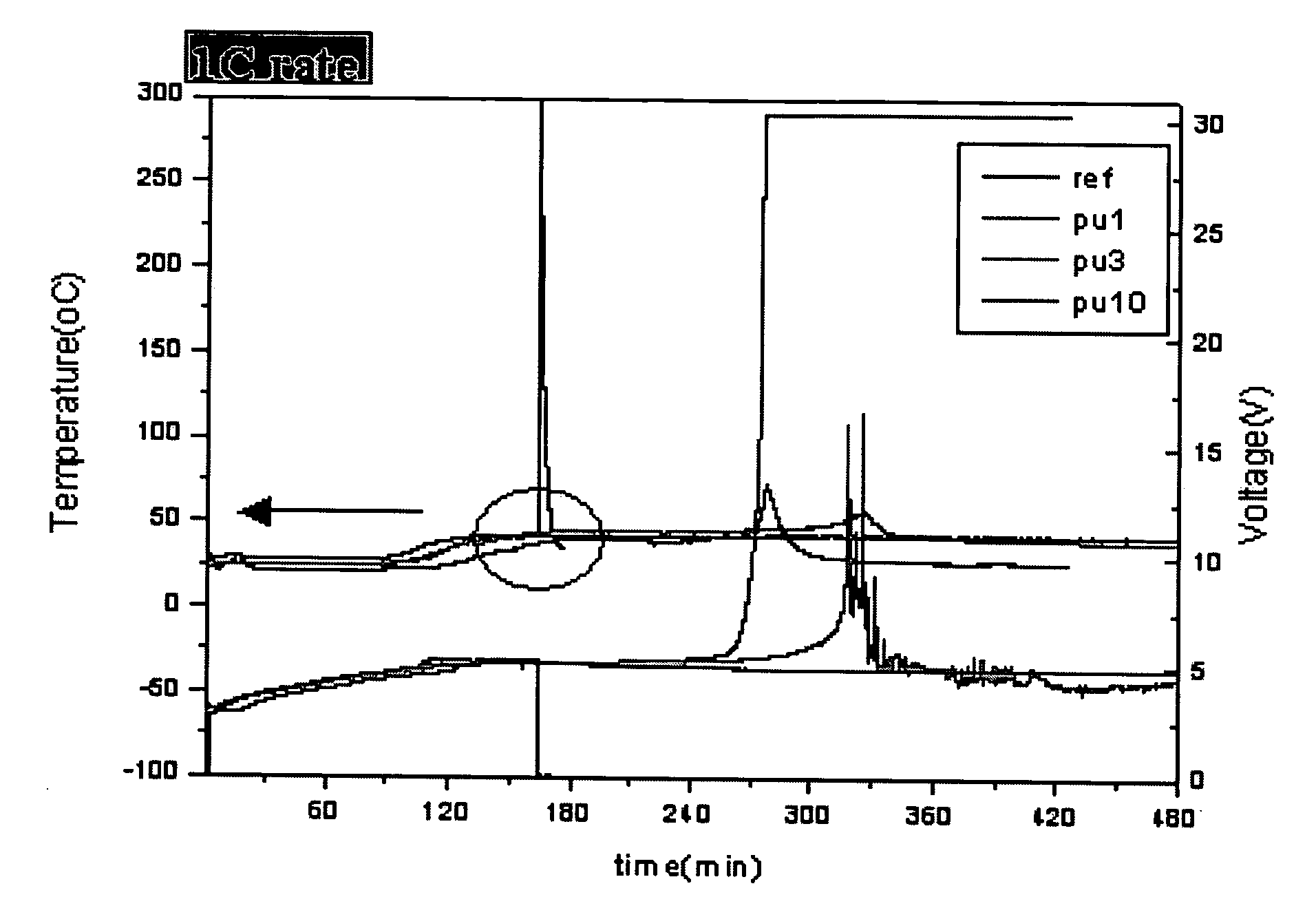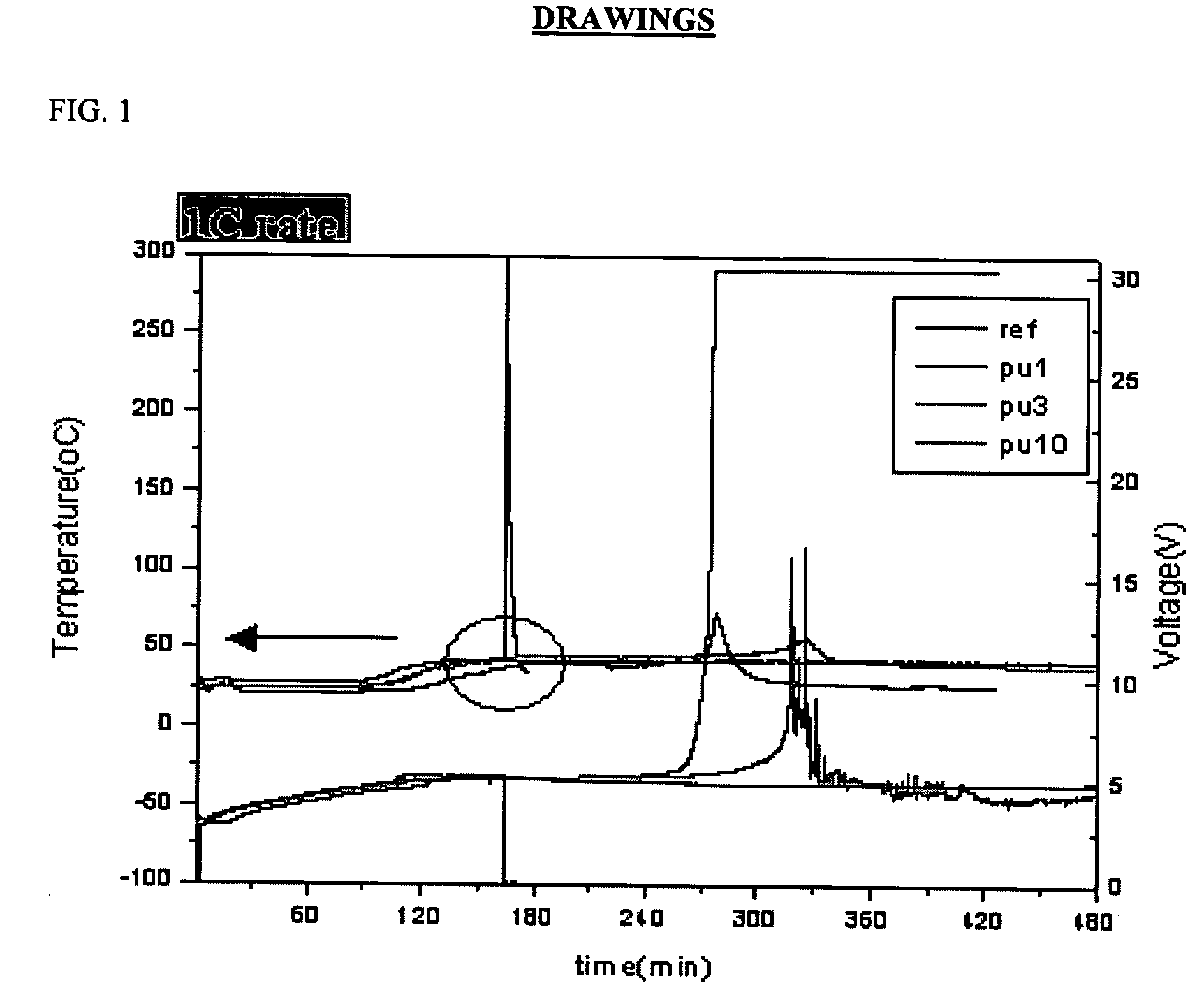Lithium secondary battery having improved stability to overcharge
a secondary battery and stability technology, applied in the direction of non-aqueous electrolyte cells, cell components, electrochemical generators, etc., can solve the problems of high ignition/explosion risk of conventional lithium secondary batteries, sharp elevation of battery temperature, and battery ignition may occur, etc., to suppress abnormal operation, increase battery internal resistance, and increase battery resistance
- Summary
- Abstract
- Description
- Claims
- Application Information
AI Technical Summary
Benefits of technology
Problems solved by technology
Method used
Image
Examples
example 1
[0045] An anode was fabricated by mixing 93% carbon active material (MCMB10-28, Osaka Gas Co.) and 7% polyvinylidene difluoride (PVDF) (Kynar 761, Elf Atochem) in N-methyl-2-pyrrolidone (NMP) as a solvent for 2 hours, using a mixer (IKA Mixer) and coating the resulting mixture on a copper foil current collector, followed by drying at 130° C.
[0046] A cathode was fabricated by adding 1% by weight of polyurethane having a molecular weight of 42,000 to 45,000, which was prepared by suspension polymerization of polyethylene glycol (PEG) as a polyol compound and toluene diisocyanate (TDI) as an isocyanate compound, to a mixture of 91% LiNi1 / 3Co1 / 3Mn1 / 3O2, 3% PVDF (Kynar 761) and 6% conductive carbon (KS-6, Lonza), mixing the components in N-methyl-2-pyrrolidone (NMP) as a solvent for 2 hours, using a mixer (IKA Mixer) and coating the resulting mixture on an aluminum foil current collector, followed by drying at 130° C.
[0047] Then, a separator (celgard 2400, Hoechst Celanese) was interpo...
example 2
[0048] A battery was prepared in the same manner as in Example 1, except that 3% by weight of polyurethane was added to a cathode.
example 3
[0049] A battery was prepared in the same manner as in Example 1, except that 10% by weight of polyurethane was added to a cathode.
PUM
 Login to View More
Login to View More Abstract
Description
Claims
Application Information
 Login to View More
Login to View More - R&D
- Intellectual Property
- Life Sciences
- Materials
- Tech Scout
- Unparalleled Data Quality
- Higher Quality Content
- 60% Fewer Hallucinations
Browse by: Latest US Patents, China's latest patents, Technical Efficacy Thesaurus, Application Domain, Technology Topic, Popular Technical Reports.
© 2025 PatSnap. All rights reserved.Legal|Privacy policy|Modern Slavery Act Transparency Statement|Sitemap|About US| Contact US: help@patsnap.com


